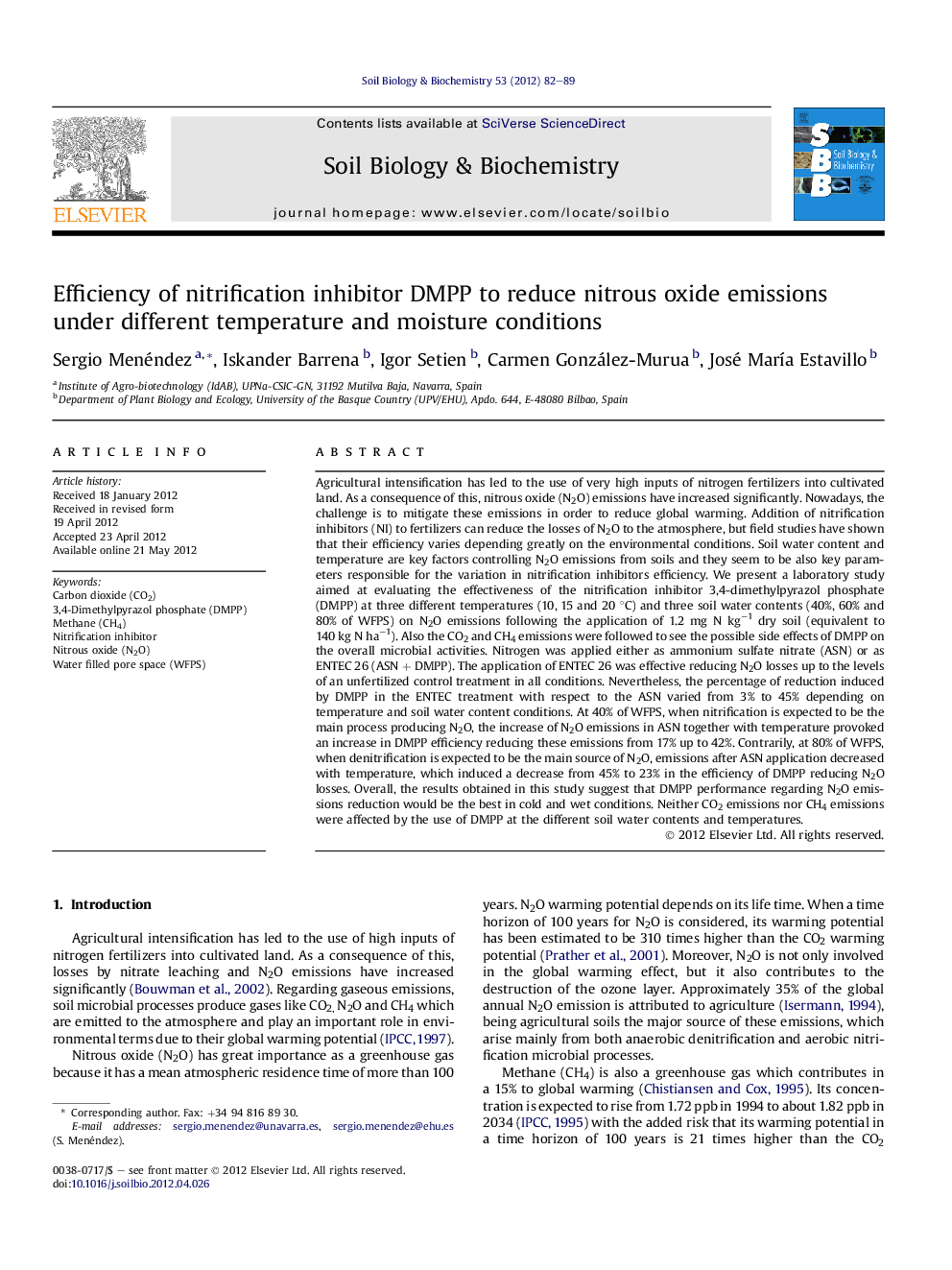| Article ID | Journal | Published Year | Pages | File Type |
|---|---|---|---|---|
| 2024917 | Soil Biology and Biochemistry | 2012 | 8 Pages |
Agricultural intensification has led to the use of very high inputs of nitrogen fertilizers into cultivated land. As a consequence of this, nitrous oxide (N2O) emissions have increased significantly. Nowadays, the challenge is to mitigate these emissions in order to reduce global warming. Addition of nitrification inhibitors (NI) to fertilizers can reduce the losses of N2O to the atmosphere, but field studies have shown that their efficiency varies depending greatly on the environmental conditions. Soil water content and temperature are key factors controlling N2O emissions from soils and they seem to be also key parameters responsible for the variation in nitrification inhibitors efficiency. We present a laboratory study aimed at evaluating the effectiveness of the nitrification inhibitor 3,4-dimethylpyrazol phosphate (DMPP) at three different temperatures (10, 15 and 20 °C) and three soil water contents (40%, 60% and 80% of WFPS) on N2O emissions following the application of 1.2 mg N kg−1 dry soil (equivalent to 140 kg N ha−1). Also the CO2 and CH4 emissions were followed to see the possible side effects of DMPP on the overall microbial activities. Nitrogen was applied either as ammonium sulfate nitrate (ASN) or as ENTEC 26 (ASN + DMPP). The application of ENTEC 26 was effective reducing N2O losses up to the levels of an unfertilized control treatment in all conditions. Nevertheless, the percentage of reduction induced by DMPP in the ENTEC treatment with respect to the ASN varied from 3% to 45% depending on temperature and soil water content conditions. At 40% of WFPS, when nitrification is expected to be the main process producing N2O, the increase of N2O emissions in ASN together with temperature provoked an increase in DMPP efficiency reducing these emissions from 17% up to 42%. Contrarily, at 80% of WFPS, when denitrification is expected to be the main source of N2O, emissions after ASN application decreased with temperature, which induced a decrease from 45% to 23% in the efficiency of DMPP reducing N2O losses. Overall, the results obtained in this study suggest that DMPP performance regarding N2O emissions reduction would be the best in cold and wet conditions. Neither CO2 emissions nor CH4 emissions were affected by the use of DMPP at the different soil water contents and temperatures.
► We studied the effect of fertilization on gaseous emission in controlled conditions. ► Fertilizer with and without nitrification inhibitor (DMPP) was applied. ► Treatments were incubated at 3 different soil water contents and temperatures. ► DMPP is effective reducing N2O losses up to control levels. ► The percentage of reduction induced by DMPP depends on environmental conditions.
